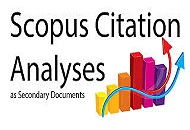Designing AI-Based Learning Assistant to Elevate Computational Thinking: A UX-Focused Redesign Approach
DOI:
https://doi.org/10.33394/jp.v12i4.16705Keywords:
User-Centered Design, Scaffolding, Computational Thinking, Cognitive Walkthrough, User Experience QuestionnaireAbstract
This study aims to evaluate and enhance the User Experience (UX) of SEKAPAI, a web-based AI learning assistant developed to support Computational Thinking (CT) development. The initial version was assessed using Cognitive Walkthrough, System Usability Scale (SUS), and User Experience Questionnaire (UEQ), involving ten participants. Data collected from these instruments were analyzed using descriptive statistics to quantify usability scores, and qualitative feedback from the walkthroughs was subjected to thematic analysis to identify pain points. The preliminary results showed a success rate of 90%, but also revealed issues in clarity and feature navigation. Based on user feedback, the platform underwent a redesign process guided by User-Centered Design (UCD) stages, resulting in improvements in structure, interaction flow, and interface clarity. The updated prototype showed clear improvements, supported by Maze testing with a UX score of 80 ('Good') and a SUS increase to 86 ('Excellent'), and the task success rate improved to 97.14%, indicating a significant enhancement in user satisfaction and efficiency. This study not only validates the effectiveness of UCD in refining AI-based learning tools but also highlights the potential for future system development. These findings contribute to the design methodology of intelligent educational systems by aligning pedagogical goals with interactive design strategies.
References
Alsadi, A., & McPhee, C. A. (2021). User-Centred Design in Educational Applications: A systematic literature review. In 2021 International Conference Engineering Technologies and Computer Science (EnT). IEEE. https://doi.org/10.1109/EnT52731.2021.00025
Bergdahl, N., Bond, M., Sjöberg, J., Dougherty, M., & Oxley, E. (2024). Unpacking student engagement in higher education learning analytics: a systematic review. International Journal of Educational Technology in Higher Education, 21(1), 63. https://doi.org/10.1186/s41239-024-00439-6
Brooke, J. (2020). SUS: A “Quick and Dirty” Usability Scale. Usability Evaluation In Industry, January 1996, 207–212. https://doi.org/10.1201/9781498710411-35
Brown, D. (2021). Educational Learning Experience Questionnaire: Development and validation. In Learning Environments Research (Vol. 24, Issue 1, pp. 123–142). https://doi.org/10.1007/s10984-020-09390-x
Castillo López, M. I., Cervantes, A. L. E., & Martínez, G. C. (2023). Applying user experience and user‑centered design software processes in undergraduate mobile application development teaching. ArXiv Preprint ArXiv:2308.07494. https://arxiv.org/abs/2308.07494
Fan, L., Guo, M., & He, Z. (2024). Generative AI and the rise of metacognitive laziness: Implications for student learning. Computers & Education, 207, 104659. https://doi.org/10.1016/j.compedu.2024.104659
Hsu, H.-Y., & Hsu, C.-Y. (2025). Designing generative AI-enhanced game-based learning to foster computational thinking in secondary education. Computers & Education, 210, 105060. https://doi.org/10.1016/j.compedu.2024.105060
Karaahmetoğlu, K., & Korkmaz, Ö. (2019). The effect of project-based Arduino educational robot applications on students’ computational thinking skills and their perception of basic STEM skill levels. Participatory Educational Research, 6(2), 1–14. https://doi.org/10.17275/per.19.8.6.2
Lee, H. S., & Yoon, S. Y. (2021). Translation and validation of the Computational Thinking Scale for Korean learners. Journal of Educational Measurement, 59(3), 312–327. https://doi.org/10.1111/jedm.12345
Liao, J., Zhong, L., Zhe, L., Xu, H., Liu, M., & Xie, T. (2024). Scaffolding Computational Thinking With ChatGPT. IEEE Transactions on Learning Technologies, 17, 1668–1682. https://doi.org/10.1109/TLT.2024.3392896
Limin, F. S. (2023). Improving learning motivation by applying user‑centered design and augmented reality on 3D interactive application. In Jurnal Ilmu Pengetahuan dan Teknologi Komputer (Vol. 9, Issue 1, pp. 8–16). https://doi.org/10.33480/jitk.v9i1.4124
Lyu, Y., Zhao, Q., & Liu, J. (2024). CodeTutor: A large language model-based programming assistant to support computational thinking development. British Journal of Educational Technology, 55(2), 422–439. https://doi.org/10.1111/bjet.13506
Neumann, M., & Baumann, L. (2021). Agile methods in higher education: Adapting and using eduScrum with real world projects. ArXiv Preprint ArXiv:2106.12166. https://arxiv.org/abs/2106.12166
No, V., Yasmine, Y. S., & Hikmawan, R. (2025). Edumatic : Jurnal Pendidikan Informatika ChatGPT sebagai Alat Bantu dalam Penulisan Karya Ilmiah Mahasiswa : Analisis Keterlibatan dan Kreativitas. 9(1), 99–108. https://doi.org/10.29408/edumatic.v9i1.29496
Nouri, J., Zhang, L., Mannila, L., & Norén, E. (2020). Development of computational thinking, digital competence and 21st century skills when learning programming in K-9. Education Inquiry, 11(1), 1–17. https://doi.org/10.1080/20004508.2019.1627844
Pérez, T. L. (2020). Assessing student engagement and digital learning experiences in online educational platforms. In Computers & Education (Vol. 160, p. 104032). https://doi.org/10.1016/j.compedu.2020.104032
Qin, Y., Zhang, X., Wang, Y., & Rajendran, A. K. (2024). Generative AI usage and cognitive depletion: Evidence from EEG neuroimaging. Nature Human Behaviour, 8(2), 222–230. https://doi.org/10.1038/s41562-024-01715-1
Ramírez, A. S., Ayala, G. X., Murillo, M., Glik, D. C., & Guerrero, A. D. (2025). Integrating Theory With a User-Centered Design Approach to Maximize mHealth Acceptability and Usability. Health Education & Behavior, 52(3), 329–339. https://doi.org/10.1177/10901981241311232
Schrepp, M., Hinderks, A., & Thomaschewski, J. (2017). Construction of a Benchmark for the User Experience Questionnaire (UEQ). International Journal of Interactive Multimedia and Artificial Intelligence, 4(4), 40. https://doi.org/10.9781/ijimai.2017.445
Shute, V. J., Sun, C., & Asbell-Clarke, J. (2017). Demystifying computational thinking. Educational Research Review, 22, 142–158. https://doi.org/10.1016/j.edurev.2017.09.003
Silva, A. L., & Costa, R. S. (2022). Adapting the Computational Thinking Scale (CTS) to Brazilian Portuguese: Cross-cultural validation. In Educational Assessment (Vol. 28, Issue 4, pp. 405–422). https://doi.org/10.1080/10627197.2022.2034567
Sonkar, R., Jaiswal, R., & Shukla, A. (2023). CLASS: A CT-oriented learning assistant with scaffolding strategies in intelligent tutoring systems. Education and Information Technologies, 28(6), 7785–7804. https://doi.org/10.1007/s10639-023-11795-6
Subiyakto, A., Amimah, A., Nurmiati, E., Zulfiandri, Z., Rustamaji, E., Haryanto, T., & Rahman, T. K. A. (2022). Investigating User Experience To Redesign User Interface Using User-Centered Design Approach. ICIC Express Letters, Part B: Applications, 13(8), 861–868. https://doi.org/10.24507/icicelb.13.08.861
Teasley, S. D., Kay, M., Elkins, S., & Hammond, J. (2021). User-centered design for a student-facing dashboard grounded in learning theory BT - Visualizations and Dashboards for Learning Analytics (pp. 191–212). Springer. https://doi.org/10.1007/978-3-030-66706-6_10
Wing, J. M. (2006). Computational thinking. Communications of the ACM, 49(3), 33–35. https://doi.org/10.1145/1118178.1118215
Wong, G. K. W., & Cheung, H. Y. (2020). Exploring children’s perceptions of developing twenty-first century skills through computational thinking and programming. Interactive Learning Environments, 28(4), 438–450. https://doi.org/10.1080/10494820.2018.1534245
Wu, C.-H., Chien, Y.-C., Chou, M.-T., & Huang, Y.-M. (2025). Integrating computational thinking, game design, and design thinking: A scoping review on trends, applications, and implications for education. Humanities and Social Sciences Communications, 12, Article 163. https://doi.org/10.1057/s41599-025-04502-x
Zhai, Y., Aslan, A., & Wang, K. (2024). Exploring the negative cognitive effects of overreliance on AI dialogue systems in education: A systematic review. Computers and Education: Artificial Intelligence, 5, 100169. https://doi.org/10.1016/j.caeai.2024.100169
Published
How to Cite
Issue
Section
Citation Check
License
Copyright (c) 2025 The Author(s)

This work is licensed under a Creative Commons Attribution-ShareAlike 4.0 International License.
License and Publishing Agreement
In submitting the manuscript to the journal, the authors certify that:
- They are authorized by their co-authors to enter into these arrangements.
- The work described has not been formally published before, except in the form of an abstract or as part of a published lecture, review, thesis, or overlay journal.
- That it is not under consideration for publication elsewhere,
- That its publication has been approved by all the author(s) and by the responsible authorities tacitly or explicitly of the institutes where the work has been carried out.
- They secure the right to reproduce any material that has already been published or copyrighted elsewhere.
- They agree to the following license and publishing agreement.
Copyright
Authors who publish with Jurnal Paedagogy agree to the following terms:
- Authors retain copyright and grant the journal right of first publication with the work simultaneously licensed under a Creative Commons Attribution License (CC BY-SA 4.0) that allows others to share the work with an acknowledgment of the work's authorship and initial publication in this journal.
- Authors are able to enter into separate, additional contractual arrangements for the non-exclusive distribution of the journal's published version of the work (e.g., post it to an institutional repository or publish it in a book), with an acknowledgment of its initial publication in this journal.
- Authors are permitted and encouraged to post their work online (e.g., in institutional repositories or on their website) prior to and during the submission process, as it can lead to productive exchanges, as well as earlier and greater citation of published work.
Licensing for Data Publication
-
Open Data Commons Attribution License, http://www.opendatacommons.org/licenses/by/1.0/ (default)






